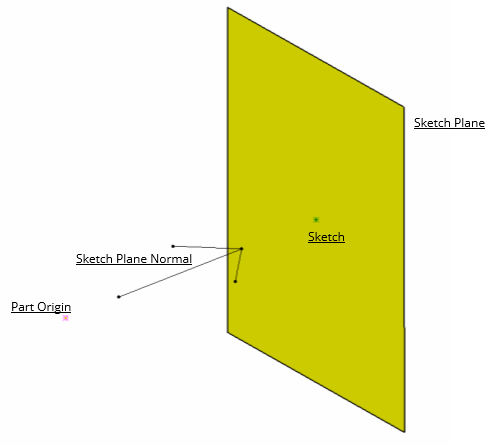
Why Use a Positioned Sketch in CATIA V5 When a Normal (Sliding) Sketch Does the Same Thing?
The majority of the time it is sufficient, however it does not give the user control over two very important features; the sketch origin and the sketch orientation. In a Sliding Sketch the sketch origin is the projection of the part origin onto the sketch plane in the direction normal to the sketch plane.
Figure 1. Illustration of Part origin projected onto sketch plane as sketch origin.
The illustration in Figure 1. displays an example of how the Part Origin is projected onto to the sketch plane in the direction normal to the sketch plane in order to create the sketch origin. This is true in a sliding sketch and the default in a positioned sketch.
The true advantage of a positioned sketch is being able to define the sketch support, sketch origin and sketch orientation where the latter two differentiate it from a sliding sketch. Watch the video below to see a few examples of how a positioned sketch is more advantageous over a sliding sketch.



